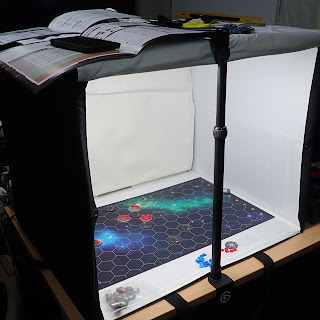Pole Cam
For the times when you can't use a drone, there is pole cam. You don't need a special photograph pole. We adapted a Wolf-tools extending pole with rock-steady results.
Using a camera on a pole, often referred to as a "pole camera" or "telescopic camera pole," has several advantages and use cases compared to using a drone. Here are some reasons why someone might choose a camera on a pole over a drone:
1. Indoor Use: Drones are typically designed for outdoor use, whereas a camera on a pole can be used indoors. This makes it suitable for various indoor inspections, such as building inspections, search and rescue operations, or even inspecting machinery in manufacturing facilities.
2. No Flight Restrictions: Drones are subject to flight regulations, which can limit where and when they can be flown. In contrast, a camera on a pole doesn't face these restrictions, making it a more versatile option.
3. Cost-Efficiency: A camera on a pole can be a more cost-effective solution compared to a drone, especially if you don't need the aerial perspective that a drone provides.
4. Stability: Cameras on poles offer stability and precision, allowing for more controlled and steady shots compared to the sometimes shaky footage that can result from drone flights.
5. Simplicity: Operating a camera on a pole is generally simpler and requires less technical expertise compared to flying a drone, making it accessible to a wider range of users.
6. Privacy and Safety: Drones can raise privacy concerns and safety issues when flown near people or sensitive areas. A camera on a pole is less intrusive and may be a more acceptable choice in certain situations.
It's worth noting that the choice between using a camera on a pole or a drone depends on the specific needs and constraints of the task at hand. In some situations, using both methods in combination may provide the best results, allowing you to capture both ground-level and aerial perspectives.



Comments
Post a Comment